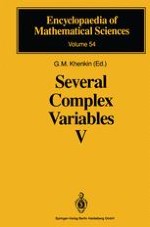In this part, we present a survey of mean-periodicity phenomena which arise in connection with classical questions in complex analysis, partial differential equations, and more generally, convolution equations. A common feature of the problem we shall consider is the fact that their solutions depend on tech niques and ideas from complex analysis. One finds in this way a remarkable and fruitful interplay between mean-periodicity and complex analysis. This is exactly what this part will try to explore. It is probably appropriate to stress the classical flavor of all of our treat ment. Even though we shall frequently refer to recent results and the latest theories (such as algebmic analysis, or the theory of Bernstein-Sato polyno mials), it is important to observe that the roots of probably all the problems we discuss here are classical in spirit, since that is the approach we use. For instance, most of Chap. 2 is devoted to far-reaching generalizations of a result dating back to Euler, and it is soon discovered that the key tool for such gen eralizations was first introduced by Jacobi! As the reader will soon discover, similar arguments can be made for each of the subsequent chapters. Before we give a complete description of our work on a chapter-by-chapter basis, let us make a remark about the list of references. It is quite hard (maybe even impossible) to provide a complete list of references on such a vast topic.
